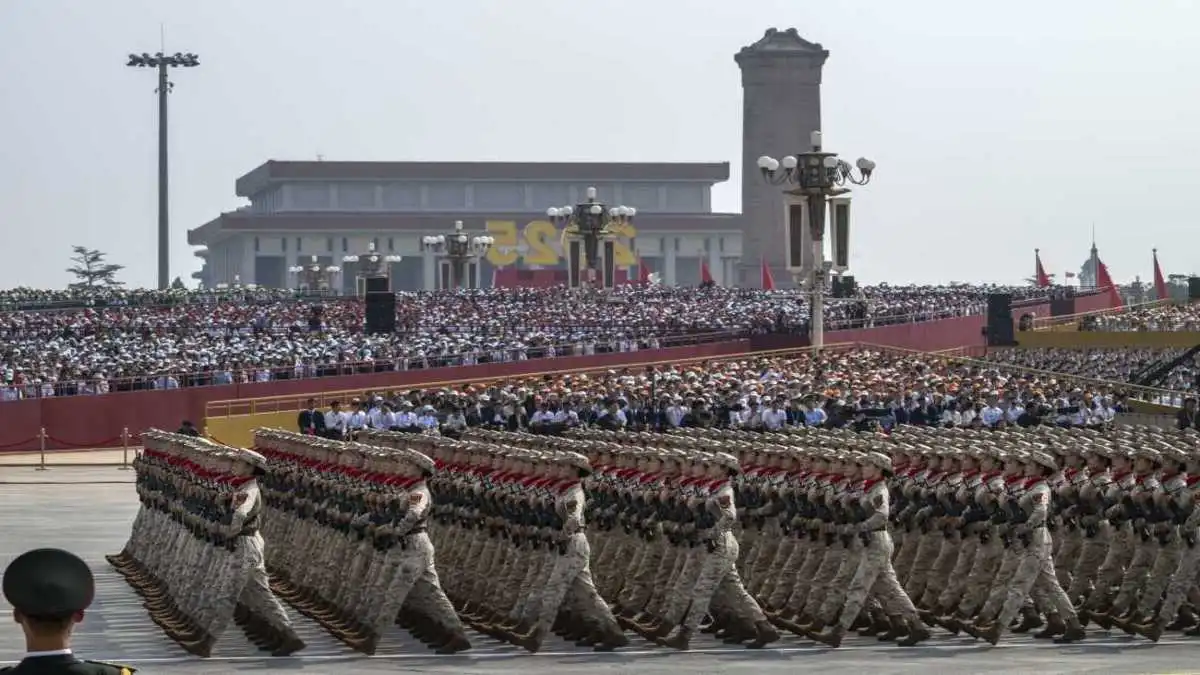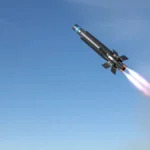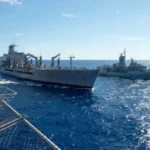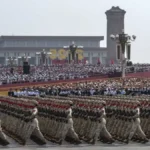On September 3, 2025, China will hold a Victory Day parade in Beijing to mark the 80th anniversary of Japan’s surrender in World War II. The parade will take place at a time when China is moving forward with a massive upgrade of its strategic forces. New systems such as hypersonic missiles, directed energy weapons, nuclear-capable ballistic missiles, and advanced air and missile defense units are expected to be on display. Leaders from Russia, Serbia, and several ASEAN nations are also expected to attend the event.
Immediately following the parade, the CSIS Defense and Security Division will host a rapid response session to review what was displayed and what it means for the balance of power in the region. The discussion will focus on three main issues: the capabilities announced, the impact on China’s military posture, and what steps the United States should take in response.
Speakers include Heather Williams, director of the CSIS Project on Nuclear Issues, Tom Karako, director of the CSIS Missile Defense Project, and Kari Bingen, director of the CSIS Aerospace Security Project. Together, they will provide insight into how China’s modernization drive could shape U.S. defense and security strategy in the coming years.
Why does China hold a Victory Day parade, and what does it commemorate?
Victory Day parades are held to honor China’s role in defeating Japan in World War II and to commemorate the enormous sacrifices made by its people. The German invasion of Poland in 1939 is often seen as the beginning of the war in the West, while Asia had already been facing Japanese aggression for years.
Japan first invaded Manchuria in 1931, leading to clashes between Japanese forces and Chinese troops under Chiang Kai-shek’s Kuomintang (KMT) and the Chinese Communist Party (CCP). At the time, the KMT and CCP were fighting each other in the first phase of their civil war, which gave Japan space to gain territory.
By July 1937, fighting had broken out near Beijing. Within days, this had escalated into full-scale war. The KMT and CCP agreed to set aside their animosity and form a united front against Japan, which lasted until 1945.
Japanese forces then launched a brutal campaign in eastern China, including the capture of Nanjing. The troops killed thousands of civilians, destroyed towns, and committed mass sexual violence. Both the CCP and the KMT continued to fight, but their losses were heavy. Historians estimate that about 20 million Chinese died during the conflict, most of them civilians.
In 1941, U.S. President Franklin D. Roosevelt imposed an oil embargo on Japan. That December, Japan retaliated with a surprise attack on Pearl Harbor in Hawaii, sinking ships, killing troops, and drawing the U.S. into the war.
In the early 1940s, Japan expanded further, capturing territories in modern-day Indonesia, Malaysia, Myanmar, and even parts of India.
2025 ilitary Parade
In 2015, Xi Jinping celebrated the 70th anniversary of China’s victory over Japan with a grand military parade on September 3. He chose the date instead of the usual October 1 National Day to make a clear point. The event was intended to highlight China’s sacrifices and role in World War II, which Beijing argues is often overlooked in Western accounts. By calling itself the “forgotten ally,” China emphasized both its role in Japan’s defeat and its wartime partnership with the Soviet Union. In doing so, Beijing sought to repair what it saw as a missing piece in the global memory of the war.[9]
Ten years later, the 2025 program for the 80th anniversary sent a strong message. It served as a show of strength rather than a look back at history. The show fits with Xi’s theme of “national rejuvenation” and underscores Beijing’s claim to hold “strategic supremacy.” [10]
Unlike the sporadic displays of previous years, the 2025 parade presented a comprehensive, organized picture of China’s military advancements. It featured strike systems, naval power, space and anti-space devices, and a growing array of asymmetric weapons designed to operate at sea, in the sky, in cyberspace, and even in orbit. Many of these systems had previously only been seen in secret tests or classified meetings, so their public display served as both a signal and a warning.
The wide array of weapons demonstrated not only the results of a growing defense industry but also of continued budget increases (see Figure 1). The parade was more than a show: a clear accounting of the money Beijing has invested in its forces and platforms that are now visible to the world.
Which world leaders attended the event?
Xi welcomed more than 25 foreign leaders to the ceremony.
The chief guests were Putin and Kim, who stood with Xi on the red carpet.
Putin was already in China after attending the Shanghai Cooperation Organization summit in Tianjin on Sunday and Monday. The North Korean leader crossed the border in his armored train early Tuesday morning, according to the state-run Rodong Sinmun newspaper.
It was the first time in 66 years that a North Korean leader had attended a Chinese military parade. The last person to do so was Kim Jong-un’s grandfather and North Korea’s founding leader Kim Il-sung in 1959.
Other leaders who came to China for the SCO summit or related talks and participated in the parade include Myanmar’s military chief Senior General Min Aung Hlaing, Iranian President Massoud Pezeshkian, Pakistani Prime Minister Shehbaz Sharif, Mongolian President Khurelsukh Ukhna, Uzbekistani President Shavkat Mirziyoyev and Belarusian President Alexander Lukashenko.
Stealth jets and drones on display
Following the September 3 military parade, the Chinese People’s Liberation Army (PLA) Air Force held the Changchun Airshow from September 19 to 23. Star displays such as the J-20, J-16, J-10C, H-6K and Y-20, along with a variety of helicopters, drones and missiles, gave defense fans plenty to enjoy, with daily visitors averaging more than 200,000.
One of the main attractions was China’s fifth-generation stealth jet, the J-20, which was on display for the first time. Built with a lift-body shape, canards and streak wings, the fighter highlights its fully movable canards and vertical tails – a layout that provides a strong lift-to-drag ratio as well as sharp maneuverability and handling. A closer look reveals its smooth finish, with neatly worked rivets and joints, pointing to an advanced and precise build process.
Read More: Coyote Block 3NK Proves Powerful Against Drone Swarms in US Army Tests








Leave a Reply